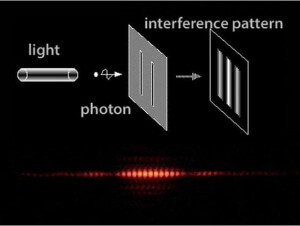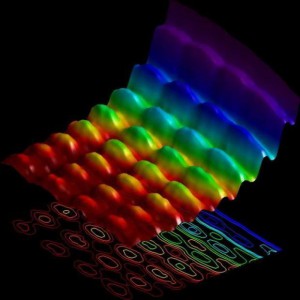
Quantum Physics: The Future Causes the Past
 1
1
 25. 07. 2018
25. 07. 2018

An experiment conducted by a group of Australian scientists has shown that what happens to particles in the past depends on whether they will be observed in the future. Until then, they are just an abstraction - they do not exist.
Quantum physics is a strange world. It focuses on the study of subatomic particles, which appear to scientists as the basic building blocks of reality. All matter, including ourselves, consists of them. According to scientists, the laws governing this microscopic world are different from those we have learned to accept for the macroscopic reality we know.
The laws of quantum physics
The laws of quantum physics tend to contradict mainstream scientific reason. At this level, one particle can be in multiple places at the same time. Two particles can be interchanged, and when one of them changes its state, the other also changes - regardless of distance - even if they are on the other side of the universe. The transmission of information seems to be faster than the speed of light.
Particles can also move across solid objects (create a tunnel) that would otherwise appear impenetrable. They can actually walk through walls like ghosts. And now the scientists have proved that what happens to a particle now is not governed by what happened to it in the past, but by what state it will be in the future. In fact, this means that at the subatomic level, time can go backwards.
If the above seems totally incomprehensible, then you are on a similar wave. Einstein called it scary, and Niels Bohr, pioneer of quantum theory, said: "If quantum physics did not shock you, then you did not understand what it was about.".
V tryled by a team of Australian scientists from the Australian National University led by Andrea Truscott, it turned out that: reality does not exist until you start watching it.
Quantum Physics - Waves and Particles
Scientists have long shown that light particles, so-called photons, can be both waves and particles at the same time. They used the so-called double slit experiment. It turned out that when the light shone on two slits, the photon was able to pass through one as particles, and over two like a wave.
Australian server New.com.au explains: The photons are weird. You can see the effect yourself when the light shines through two vertical slits. The light behaves like particles passing through the slit and forms a direct light on the wall behind it. At the same time, it behaves like a wave that creates an interference pattern that appears behind at least two slits.
Quantum physics is in different states
Quantum physics assumes that a particle lacks certain physical properties, and is defined only by the probability of the fact that it is in different states. It could be said that it exists in an indeterminate state, in a kind of super-animation, until it is actually observed. At that moment, it takes on the form of either a particle or a wave. At the same time, it is able to still retain the properties of both.
This fact was discovered by scientists in a double-breasted experiment. It has been found that when the photon as a wave / particle is observed, it collapses, indicating that it can not be seen in both states at once. Therefore, it is not possible to measure the position of the particle and its momentum at the same time.
Nevertheless, the last experiment - reported in the Digital Journal - captured for the first time an image of a photon that was in the state of a wave and at the same time a particle.
According to News.com.au, a problem that still confuses scientists is, "What makes a photon decide to be this or that?"
Experiment
Australian scientists have set up an experiment, similar to a double-slit experiment, to try to capture the moment at which photons decide whether they will be particles or waves. Instead of light, they used helium atoms, which are heavier than light photons. Scientists believe that photons of light, unlike atoms, have no mass.
"Quantum physics's assumptions about interference are strange in themselves when applied to light, which then behaves more like a wave. But to make it clear, the experiment with atoms, which are much more complicated - they have matter and react to an electric field, etc. - still contributes to this strangeness, "said Ph.D. PhD student Roman Khakimov, who participated in the experiment.
It is expected that atoms will behave just like light, that is, they will be able to behave as particles and simultaneously as waves. Scientists fired atoms through the grid in the same way as when they used a laser. The result was similar.
The second grid was used only after the atom had passed first. In addition, it was used only randomly to make it clear how the particles will react.
It was found that when two grids were used, the atom passed through the waveform, but when the second grid was removed, it behaved like particles.
So - what form it takes on after passing through the first grid depends on whether the second grid will be present. Whether the atom continued as a particle or as a wave was decided after future events.
Is it time behind?
It seems like time is running back. Cause and effect seem to be broken because the future causes the past. The linear flow of time suddenly appears to work the other way around. The key point is the moment of decision when the quantum event was observed and the measurement was performed. Before this moment, the atom appears in an indeterminate state.
As Professor Truscott said, the experiment showed that: "The future event causes the photon to decide on its past."







